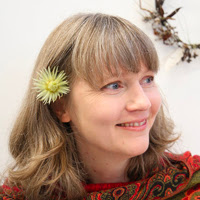Life sometimes take you in unexpected directions. My formative years and tenth birthday were spent in Victoria, Australia. I do not particularly recall that birthday but we were living in the Dandenong ranges at the time, firstly in Sassafras in the middle of the forest and then in The Basin, a small village in the foothills. My twentieth was in Auckland, New Zealand, whilst I was attending Auckland University. A decade later I was living in Dublin, and celebrated my thirtieth in a small pub in Doolin, on the West coast of Ireland. My fortieth was a quiet affair in London. I awoke late, still jet-legged after returning from a trip back from New Zealand via San Francisco and Los Angeles. My small family and I enjoyed a rare dinner out at our local cafe in Bayswater to celebrate that milestone. I lived in London for two years and during that time was fortunate enough to visit some outstanding art exhibitions.
On of the highlights for me of the time in London was the Paul Klee exhibition at the Tate Modern (October 2013 - March 2014). It was a wonderful finale to the London sojourn and a real treat to view such a comprehensive collection of work by a really important artist. This show encompassed Paul Klee’s entire career.
One of the first things at strikes you about Klee’s work is the scale - most of the works are small, some a lot smaller than one expects. It is a reminder that artworks do not necessarily have to be large to have merit or impact. I remember a similar surprise when I first viewed artworks at the National Gallery in London which I had previously only known from slides in the Art History department of the University of Auckland and through book reproductions. Van Eyck’s Arnolfini portrait comes to mind in particular, a small intricate painting which nonetheless looms large in the history of art. Klee’s work is likewise often small and encourages the intimacy of close examination.
The intimate, playful and thoughtful works of Klee’s artistic career are also remarkable for their sensitive use of colour. Klee delved deeply into colour theory. He taught at the Bauhaus in Berlin and Dessau, and colour theory would have been a big component of his lessons. The watercolours in the exhibition are delightful. Whilst they seem simple and almost naive at first glance it is easy to forget just how innovative they were at the time. Klee was influenced by the art of children and paintings such as “Fish Magic” really remind one of this with its delicately drawn colourful fish, flowers and little figures peeking out from the lower part of the canvas.
Unfortunately the Nazis destroyed many of his works and closed the Bauhaus, labelling Klee’s art and that of many of his contemporaries as degenerate. It is difficult to comprehend now how his work was branded as subversive and attacked by those in power.
Klee’s painting methods were experimental and technically innovative, a fusion of surrealist, abstract and expressionist techniques and ideas. A journey to Tunisia was a catalyst for the development of his art. Hopefully one day I’ll have the opportunity to visit an exhibition devoted to the watercolours produced on this trip. In the meantime a search on Google of Klee in Tunisia will suffice to give you an idea of these beautiful works. Travel can offer artists a chance invigorate and refresh their work and to see the world anew, something I am reminded of every time I step outside of my usual circumstances and look around at an unfamiliar landscape.


No comments:
Post a Comment